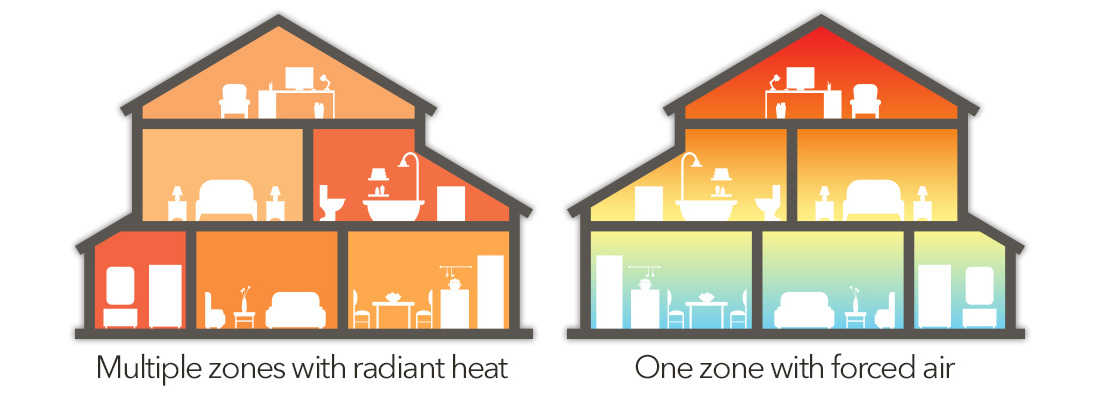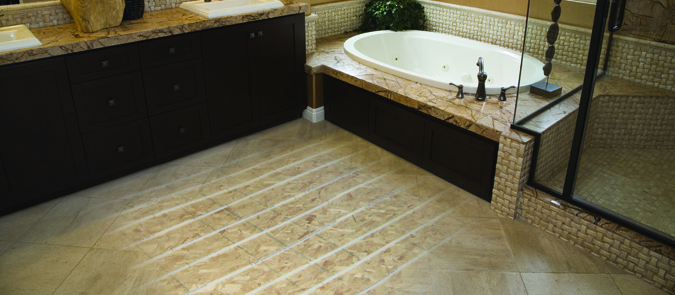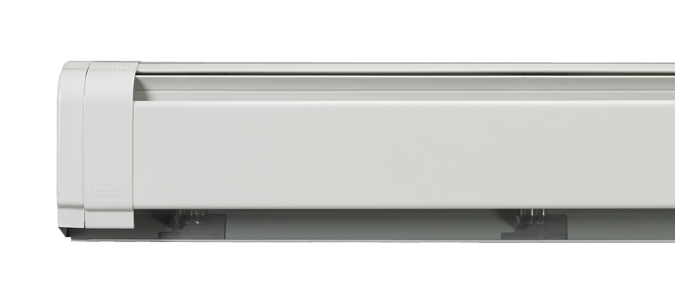Hydronic Heating, Radiant Heating
Hydronic heating uses tubes to run hot liquid beneath the floor, along base board heaters, or through radiators to heat your home. Also called radiant heating, this system is growing in popularity allowing you to control individual heating zones, lower heating costs, and reducing your carbon footprint.
The heated liquid in a hydronic radiant heat system is circulated throughout the home through loops of plastic piping. The most common application is radiant flooring, whereby the tubing is set within concrete or run through your floor joist system. This allows the entire floor area to be evenly heated. Other sources of hydronic heat are baseboard heaters and radiators.
The liquid begins in a boiler, where it is heated before moving to a plumbing manifold system. The manifold is connected to the thermostat and channels the correct temperature of water to the different heating zones in your home. This means that each zone can have its own temperature determined by user and usage. Pumps circulate newly heated water into the tubing, and return cooler water back to the boiler for reheating.
Advantages of Radiant Heating
- Heat is evenly distributed in a room: no drafts or hot and cold spots as with forced air.
- You are able to maintain a balanced humidity level in the home because hydronic heat does not dry out the air.
- Hydronic heating is a quiet system. You do not have the heating system channel off and on during the day and night.
- The heat is a constant feed, preventing the cooling and overheating cycles that occur with conventional furnaces.
- Since the air does not have to be forced to move dust and allergens are not being continually kicked up into the air.
- Hydronic heating is very efficient. Water is a better conductor of heat. Less energy is needed to heat the water and transfer it through the house.
- Hydronic piping is easily routed throughout the home. It does not require extensive ductwork and return air systems.

Uponor In-Floor Radiant Heating
Radiant floor heating provides heat from the ground evenly and consistently. Forced air systems distribute warm air via duct work in the floors, walls, and ceilings, and release it via one or two vents in the room. The results are hot and cold spots, drafts and temperature fluctuations as the system cycles off and on.
You can install hydronic tubing in concrete, floor joist systems and below hardwood floors, carpet, laminates, and vinyl flooring so the type of flooring is not restricted. To maximize the effectiveness of the system talk to the system manufacturer to follow their guide lines. A simple example would be using a carpet that is too thick, restricting the amount of heat that can rise.
Slant/Fin Baseboard Radiators
Slant/Fin hot water baseboard heating surrounds you with even , consistent heat. Natural convection perimeter heating removes the cold drafts that begin at the exterior walls. There is very little sound associated with the operation of the system. You eliminate noisy furnace ducts that expand and contract as they go through the heating cycle. Since this is not a forced air system you do not have dust and allergens lifted into the air, resulting in cleaner air and less dusting. Easy to manage room to room comfort zones, allow individual settings determined by the primary user and use of the room.


 (403) 523-9995
(403) 523-9995



